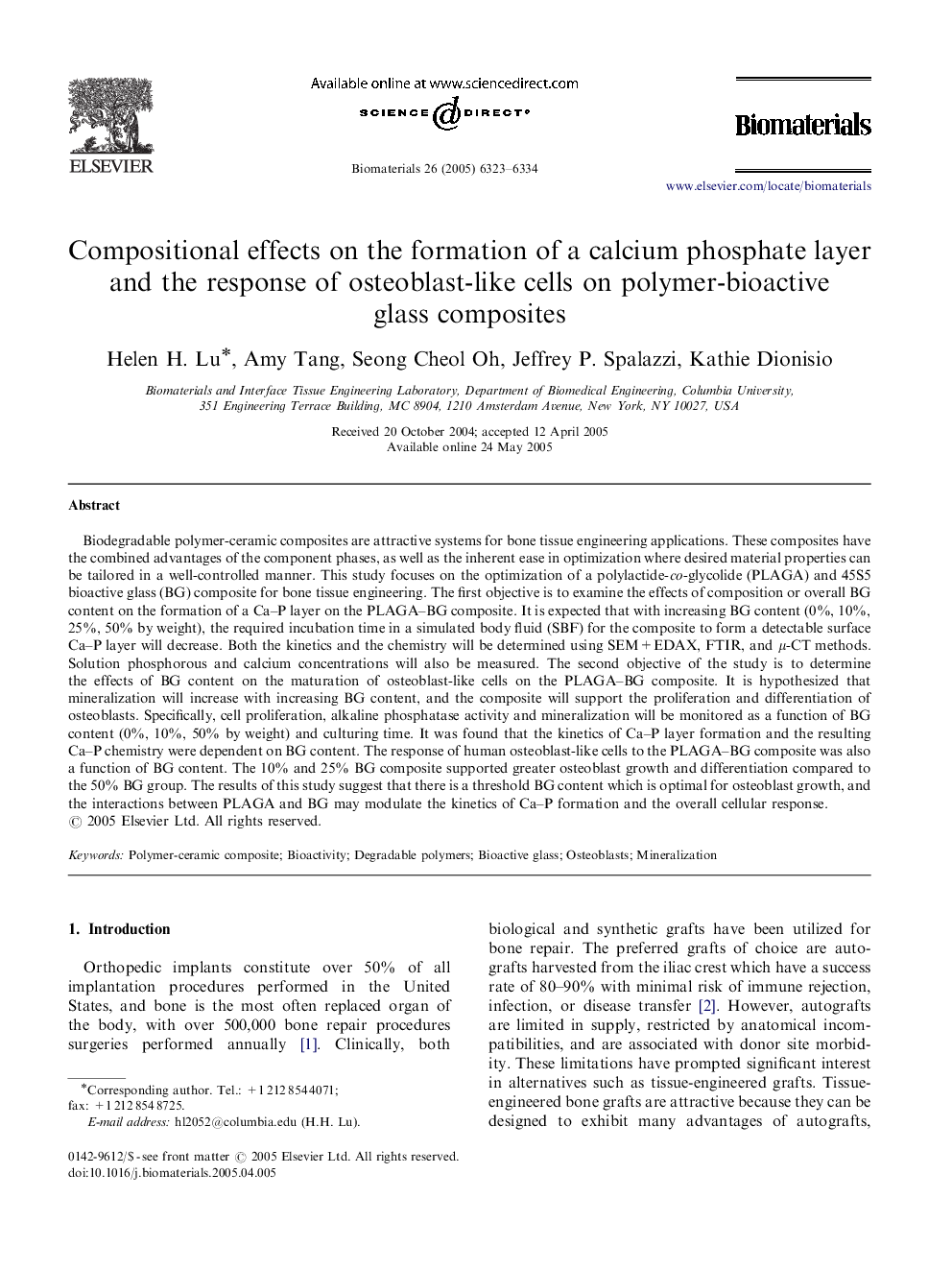| کد مقاله | کد نشریه | سال انتشار | مقاله انگلیسی | نسخه تمام متن |
|---|---|---|---|---|
| 12087 | 777 | 2005 | 12 صفحه PDF | دانلود رایگان |

Biodegradable polymer-ceramic composites are attractive systems for bone tissue engineering applications. These composites have the combined advantages of the component phases, as well as the inherent ease in optimization where desired material properties can be tailored in a well-controlled manner. This study focuses on the optimization of a polylactide-co -glycolide (PLAGA) and 45S5 bioactive glass (BG) composite for bone tissue engineering. The first objective is to examine the effects of composition or overall BG content on the formation of a Ca–P layer on the PLAGA–BG composite. It is expected that with increasing BG content (0%, 10%, 25%, 50% by weight), the required incubation time in a simulated body fluid (SBF) for the composite to form a detectable surface Ca–P layer will decrease. Both the kinetics and the chemistry will be determined using SEM+EDAX, FTIR, and μμ-CT methods. Solution phosphorous and calcium concentrations will also be measured. The second objective of the study is to determine the effects of BG content on the maturation of osteoblast-like cells on the PLAGA–BG composite. It is hypothesized that mineralization will increase with increasing BG content, and the composite will support the proliferation and differentiation of osteoblasts. Specifically, cell proliferation, alkaline phosphatase activity and mineralization will be monitored as a function of BG content (0%, 10%, 50% by weight) and culturing time. It was found that the kinetics of Ca–P layer formation and the resulting Ca–P chemistry were dependent on BG content. The response of human osteoblast-like cells to the PLAGA–BG composite was also a function of BG content. The 10% and 25% BG composite supported greater osteoblast growth and differentiation compared to the 50% BG group. The results of this study suggest that there is a threshold BG content which is optimal for osteoblast growth, and the interactions between PLAGA and BG may modulate the kinetics of Ca–P formation and the overall cellular response.
Journal: Biomaterials - Volume 26, Issue 32, November 2005, Pages 6323–6334